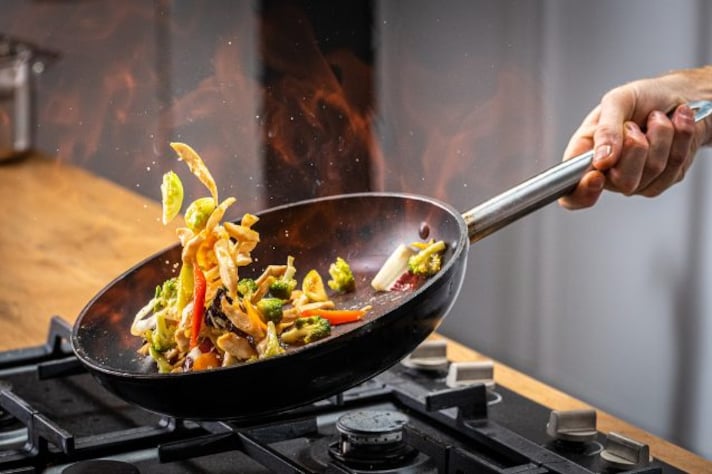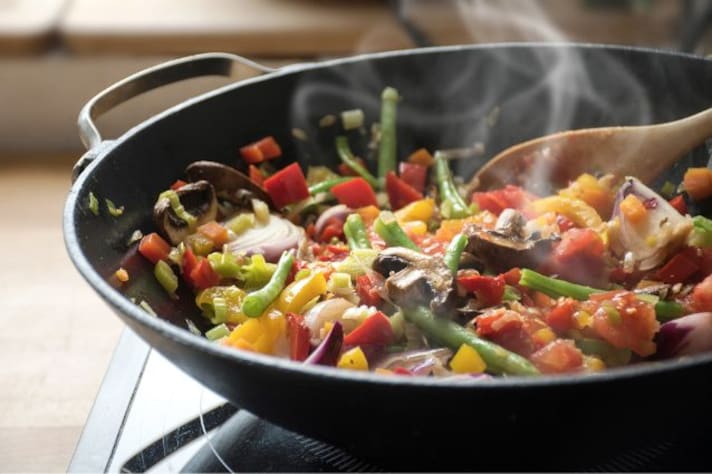Why You Should Never Overcrowd Your Vegetables When Making Stir-Fry
Overcrowding vegetables in stir fry causes them to steam instead of sear, resulting in soggy, mushy textures. It also drops the pan’s temperature, leading to uneven cooking. For best results, cook veggies in batches to maintain high heat and ensure even cooking. If your stir-fry turns out soggy, reheat the veggies in smaller batches or add crunchy elements to improve texture.

Stir-fry: the savior of busy weeknights and the champion of culinary versatility. This beloved cooking technique allows you to combine a medley of ingredients, toss them into a hot pan, and voilà, a delicious and quick dinner is served. While the recipe isn’t an exact science, some don'ts can ruin your stir fry. One of the cardinal sins? Overcrowding the vegetables.
Why You Shouldn't Overcrowd the Vegetables
The first reason you should never overcrowd vegetables in the stir-fry pan is simple: steam. When too many veggies are packed into the pan, they don’t have enough room to make contact with the hot surface. Instead of getting that delicious, caramelized sear, they steam. Steamed vegetables have their place, but a soggy, mushy stir fry isn’t it. You want your vegetables to be crisp-tender with a bit of bite, not a limp, watery mess.

Overcrowding the Vegetables Also Causes Troubles With The Temperature
Another key reason to avoid overcrowding is the pan’s temperature. Stir-frying requires high heat to achieve that perfect texture and flavor. When the pan is overloaded, the temperature drops, and the vegetables cook unevenly. Some might end up overcooked and mushy, while others are still raw. Maintaining consistent, high heat ensures that each piece cooks quickly and evenly, resulting in a vibrant, flavorful dish.
What is The Secret to Stir-Fry Vegetables, Then?
So, what’s the solution? Should you stir-fry vegetables in batches, separately, or all at once? The answer is: it depends. For best results, cook your vegetables in batches. This way, each piece has enough space to make contact with the hot surface, cooking quickly and evenly. You can then combine everything at the end for a harmonious blend of flavors. If you’re short on time, you can start with the vegetables that take longer to cook and add the quicker-cooking ones later, ensuring everything finishes together.

Oh, No! My Veggies Turned Out Soggy Anyway! What Do I Do?
Oh no! Your stir-fry veggies came out all soggy. Now what? Don’t panic. There are a few tricks to salvage your dish. First, you can drain the excess liquid from the pan and give the veggies a quick blast of high heat to dry them out and regain some texture. Alternatively, you can remove the soggy vegetables, heat the pan until it’s screaming hot, and then briefly re-cook them in smaller batches to crisp them up. Finally, embrace the stir-fry’s versatility: toss in some crunchy elements like nuts or fresh greens to add texture and contrast.
;Resize,width=767;)

;Resize,width=712;)
;Resize,width=712;)
